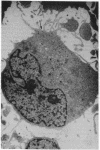Abstract
By using the hybridoma technology, a monoclonal human thyroid cell line was obtained by fusing fresh normal human thyroid cells with a human lymphoblastoid cell line. The resultant cell line, called GEJ, has been selected for its expression of thyrotropin (TSH) receptors and has morphological and functional characteristics of normal human thyroid cells. In the presence or absence of human TSH, the GEJ cell line accumulates iodide, produces thyroid hormones, expresses thyroid membrane antigens, and binds approximately equal to 600 molecules of TSH per cell. The binding site for TSH has all the characteristics of specific receptor (i.e., temperature and time dependencies, dissociation of bound TSH only by high amounts of TSH, and a glycoprotein nature). Scatchard analysis described a curvilinear graph with two dissociation constants (Kd = 0.12 X 10(-9) M and 1.6 X 10(-9) M) with, respectively, 1.2 X 10(3) and 7.2 X 10(3) binding sites per cell. This human thyroid cell line that expresses TSH receptors could be a useful tool for the study of human thyroid disorders.
Full text
PDF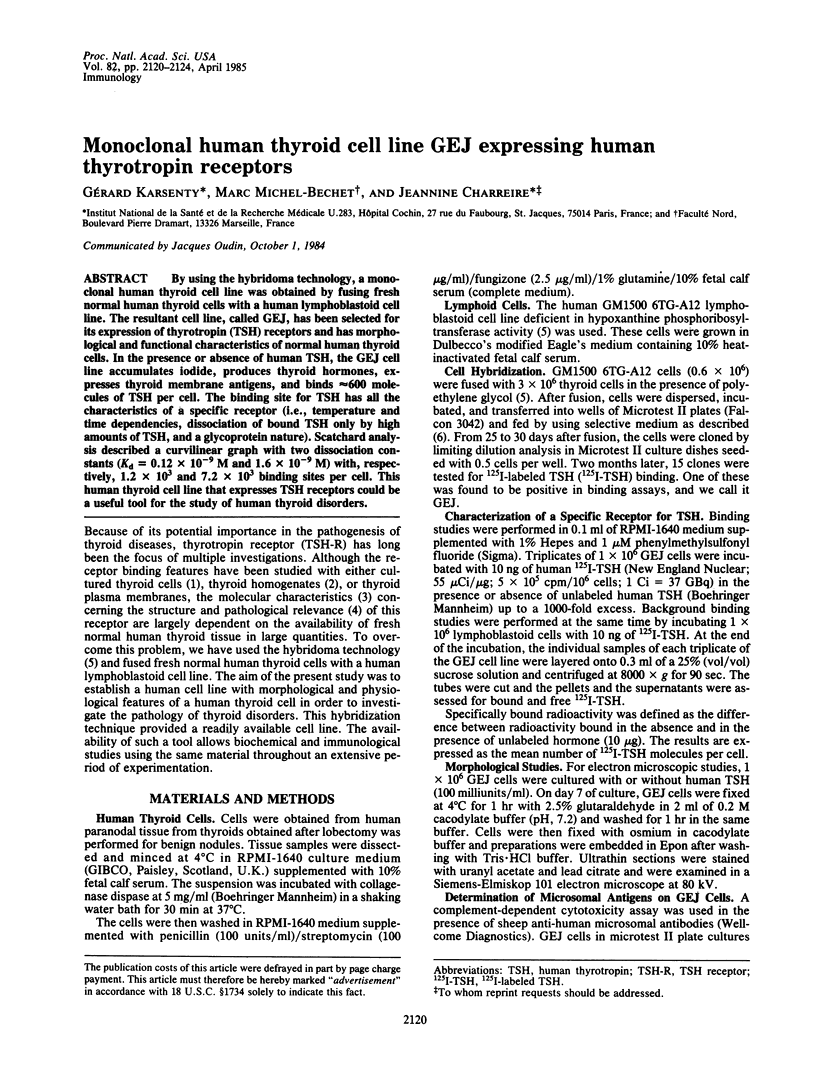
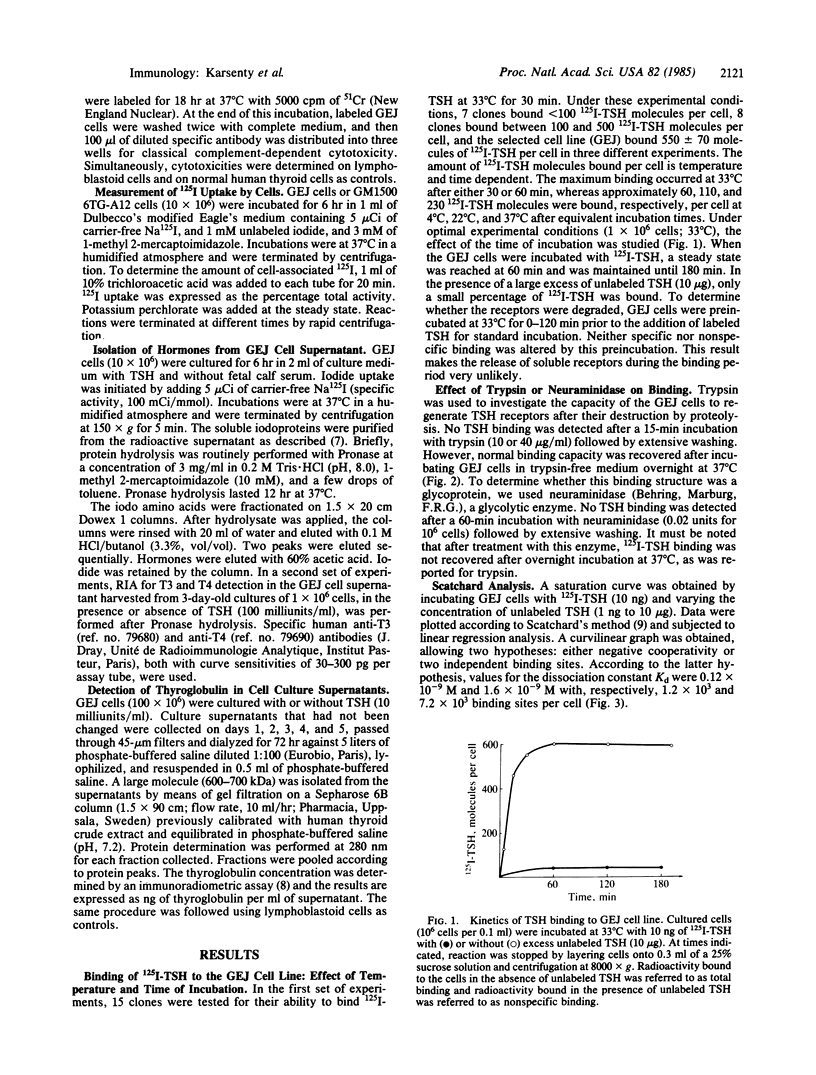
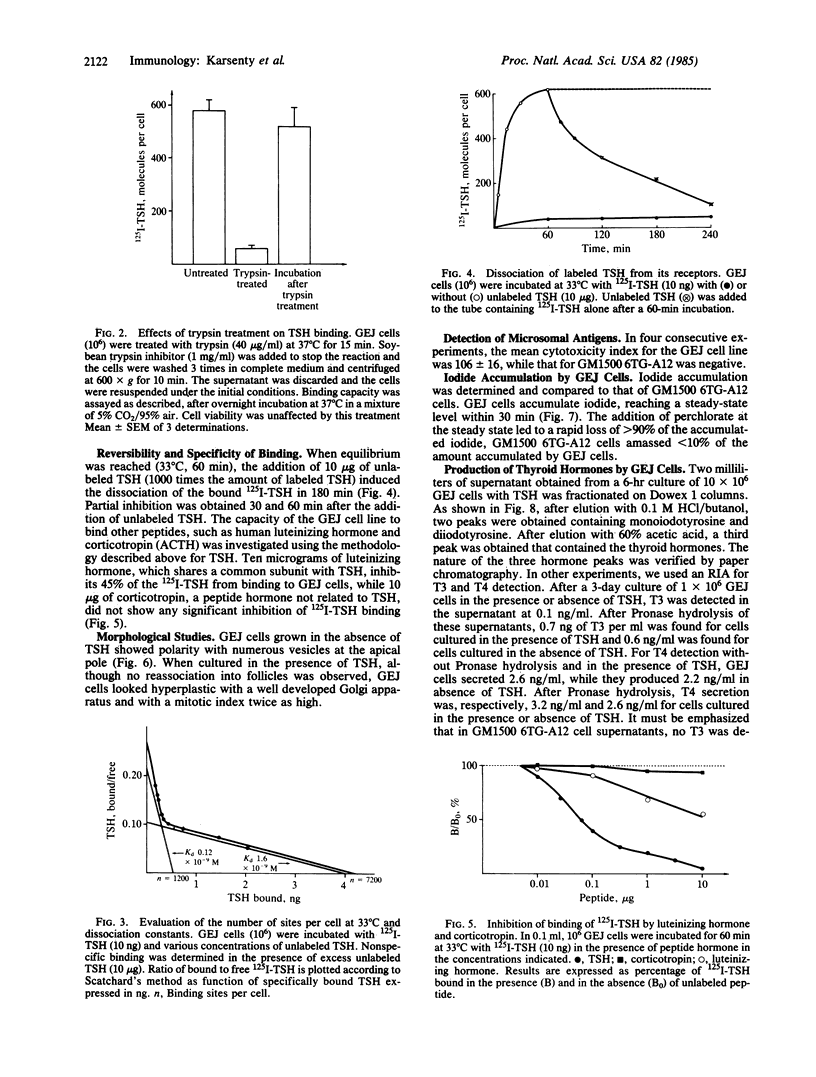
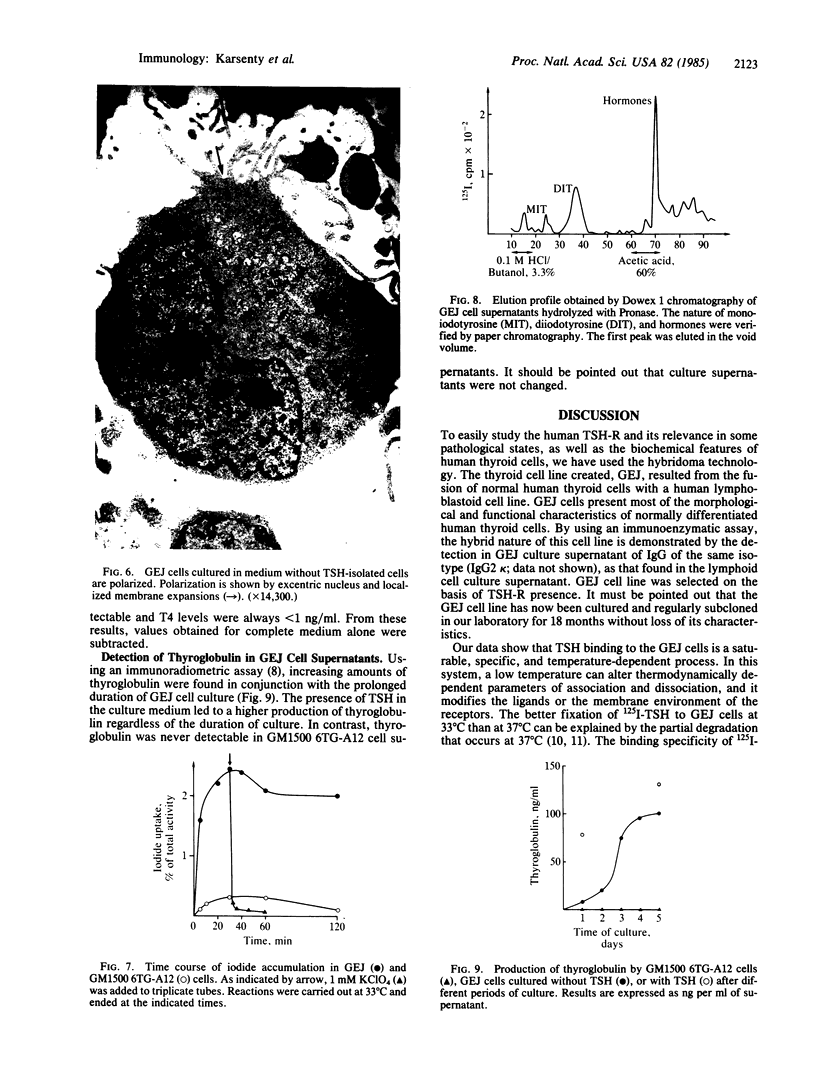
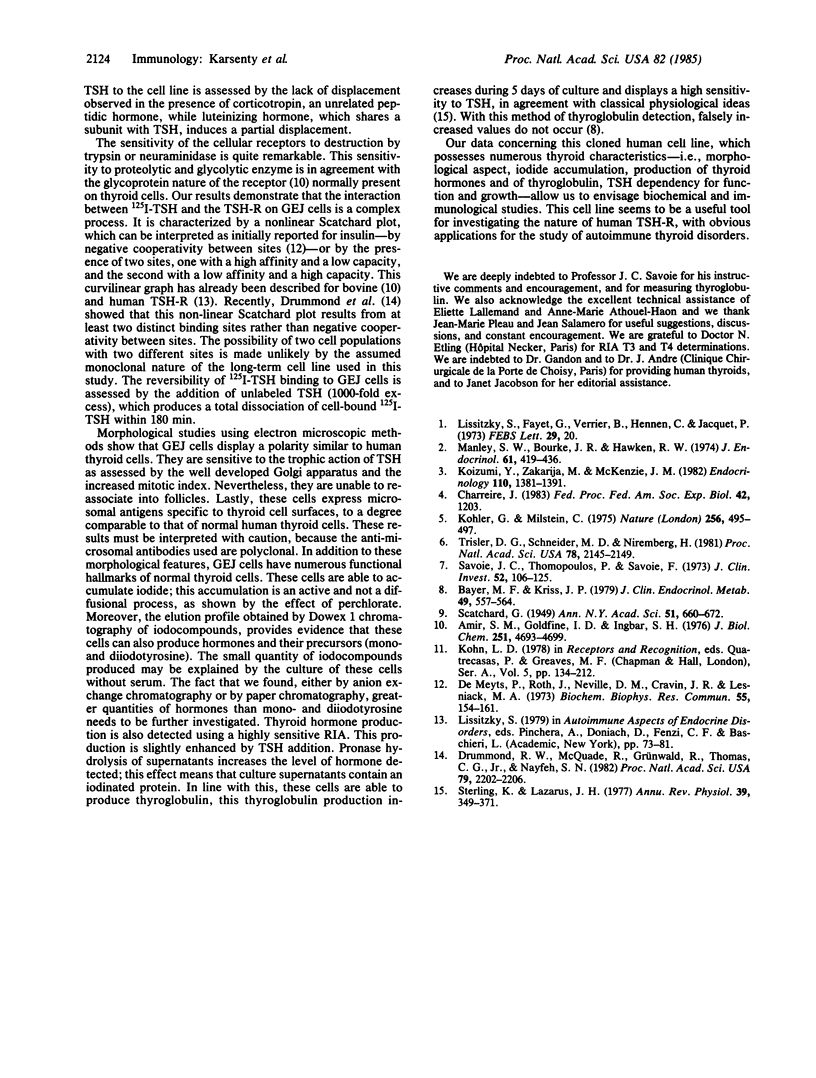
Images in this article
Selected References
These references are in PubMed. This may not be the complete list of references from this article.
- Amir S. M., Goldfine I. D., Ingbar S. H. Properties of the interaction between bovine thyrotropin and bovine thyroid plasma membranes. J Biol Chem. 1976 Aug 10;251(15):4693–4699. [PubMed] [Google Scholar]
- Bayer M. F., Kriss J. P. Immunoradiometric assay for serum thyroglobulin: semiquantitative measurement of thyroglobulin in antithyroglobulin-positive sera. J Clin Endocrinol Metab. 1979 Oct;49(4):557–564. doi: 10.1210/jcem-49-4-557. [DOI] [PubMed] [Google Scholar]
- Drummond R. W., McQuade R., Grunwald R., Thomas C. G., Jr, Nayfeh S. N. Separation of two thyrotropin binding components from porcine thyroid tissue by affinity chromatography: characterization of high and low affinity sites. Proc Natl Acad Sci U S A. 1982 Apr;79(7):2202–2206. doi: 10.1073/pnas.79.7.2202. [DOI] [PMC free article] [PubMed] [Google Scholar]
- Koizumi Y., Zakarija M., McKenzie J. M. Solubilization, purification, and partial characterization of thyrotropin receptor from bovine and human thyroid glands. Endocrinology. 1982 Apr;110(4):1381–1391. doi: 10.1210/endo-110-4-1381. [DOI] [PubMed] [Google Scholar]
- Köhler G., Milstein C. Continuous cultures of fused cells secreting antibody of predefined specificity. Nature. 1975 Aug 7;256(5517):495–497. doi: 10.1038/256495a0. [DOI] [PubMed] [Google Scholar]
- Lissitzky S., Fayet G., Verrier B., Hennen G., Jaquet P. Thyroid-stimulating hormone binding to cultured thyroid cells. FEBS Lett. 1973 Jan 1;29(1):20–24. doi: 10.1016/0014-5793(73)80006-7. [DOI] [PubMed] [Google Scholar]
- Manley S. W., Bourke J. R., Hawker R. W. The thyrotrophin receptor in guinea-pig thyroid homogenate: general properties. J Endocrinol. 1974 Jun;61(3):419–436. doi: 10.1677/joe.0.0610419. [DOI] [PubMed] [Google Scholar]
- Savoie J. C., Thomopoulos P., Savoie F. Studies on mono- and diiodohistidine. I. The identification of iodohistidines from thyroidal iodoproteins and their peripheral metabolism in the normal man and rat. J Clin Invest. 1973 Jan;52(1):106–115. doi: 10.1172/JCI107153. [DOI] [PMC free article] [PubMed] [Google Scholar]
- Sterling K., Lazarus J. H. The thyroid and its control. Annu Rev Physiol. 1977;39:349–371. doi: 10.1146/annurev.ph.39.030177.002025. [DOI] [PubMed] [Google Scholar]
- Trisler G. D., Schneider M. D., Nirenberg M. A topographic gradient of molecules in retina can be used to identify neuron position. Proc Natl Acad Sci U S A. 1981 Apr;78(4):2145–2149. doi: 10.1073/pnas.78.4.2145. [DOI] [PMC free article] [PubMed] [Google Scholar]
- de Meyts P., Roth J., Neville D. M., Jr, Gavin J. R., 3rd, Lesniak M. A. Insulin interactions with its receptors: experimental evidence for negative cooperativity. Biochem Biophys Res Commun. 1973 Nov 1;55(1):154–161. doi: 10.1016/s0006-291x(73)80072-5. [DOI] [PubMed] [Google Scholar]



